Yangon, once known as Rangoon, is the largest city in Myanmar. This city was our introduction to Burmese culture, and we had two days to spend here. Here’s our experience of visiting Yangon with kids.
Myanmar, previously Burma, is the largest but least known nation in Southeast Asia. For half a century, the country languished in self-imposed obscurity under the rule of its despotic and enigmatic military rulers, little visited and even less understood. All that is now changing, and with spectacular speed. Following tentative recent economic and political reforms, the national landscape is being transformed in ways unimaginable even a few years ago, and visitors have begun travelling to Myanmar. The old Burma is still very much in evidence toady: this remains a land of a thousand gilded pagodas, of ramshackle towns and villages populated with red-robbed monks and locals dressed in the sarong-like longyi, and where the corporate brands remain notably conspicuous by their absence. The country of Myanmar, with its resource rich lands and gorgeous, tropical scenery, has a very bright future. This is a country to be visited now.
In Yangon, decades of economic and cultural isolation are still much in evidence, exemplified by the downtown district with its endless streets of decaying colonial buildings and sardine packed rusted buses. The international chains and logos found in many places around the world are completely absent. The fabric of downtown life – a dense honeycomb of pavement cafes, street hawkers, ramshackle markets and soaring stupas – look in places, untouched by the modern world.
Yangon is largely a colonial creation. Following the conquest of Upper Burma in the Third Anglo-Burmese War of 1885, colonial Rangoon (as it was known by the British) became the undisputed economic and cultural heart of Burma. Following World War I, Rangoon became the heart of the Burmese independence movement, led by students from the British created Rangoon University. The British were ousted during World War II, during which the city fell under Japanese occupation, before being retaken by the Allies in 1945. Rangoon became the capital of the new Union of Burma in 1948. In 1989 the city’s military rulers changed the name back to Yangon. Yangon became a hot-bed of pro-democracy protests, particularly during the popular uprisings of 1974, 1988 and 2007. The city lost its capital status in 2005 when a new Burmese capital was founded at Naypyidaw. Yangon however, remains the economic, cultural and political heart of the country.
Yangon’s most famous site is the Shwedagon Pagoda. Myanmar’s greatest temple, towers above the city like some kind of supersize spiritual beacon. Four majestic stairways lead up from street-level to the pagoda. The gigantic, golden stupa is 99 metres high, the entire structure gilded using the metal from 22,000 gold bars! The spire crowned with a hti (umbrella) is said to be set with 5448 diamonds, 2317 rubies and 1065 golden bells, the whole thing is topped with a single 76 carat diamond to catch the first and last rays of sun. It is surrounded by 64 mini-stupas. The terrace surrounding the main gold stupa is just as impressive, ringed with many shrines and pavilions topped with spiky gold roofs.
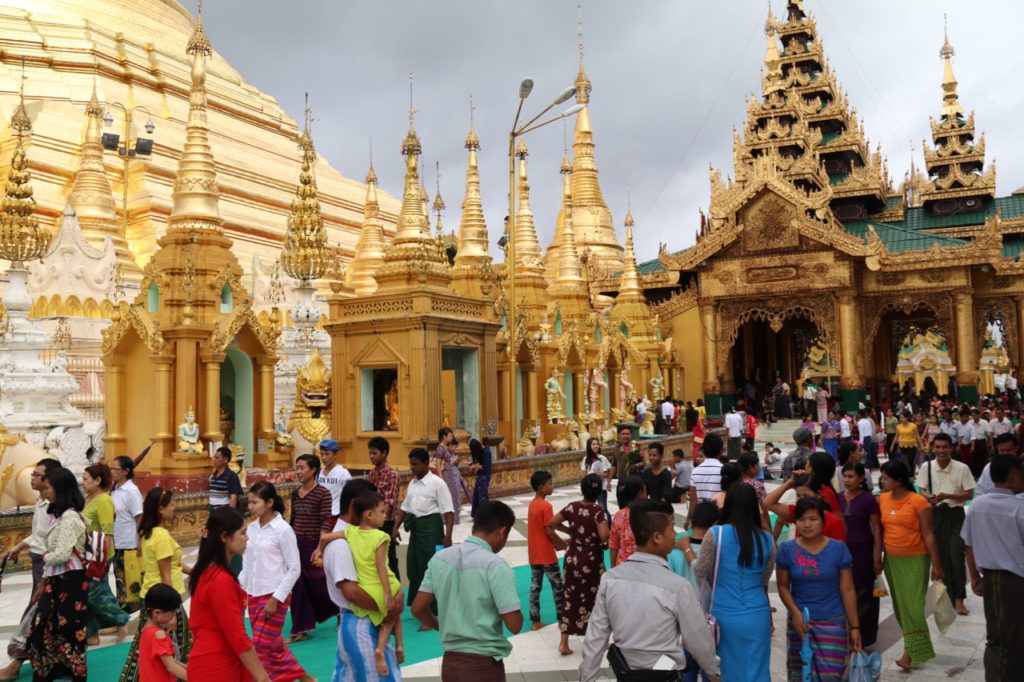
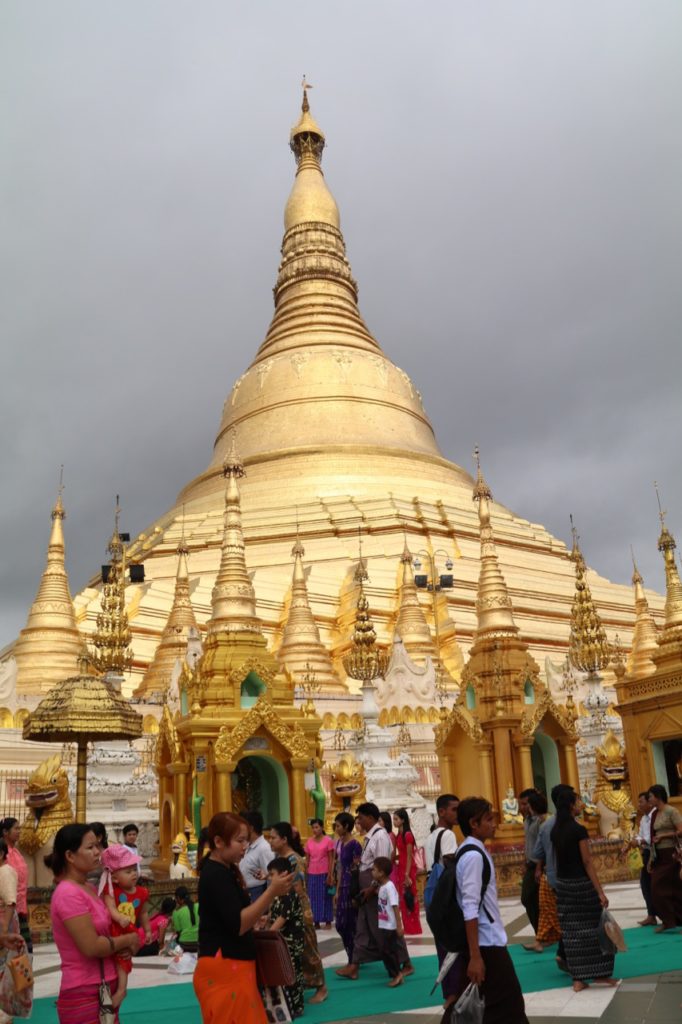
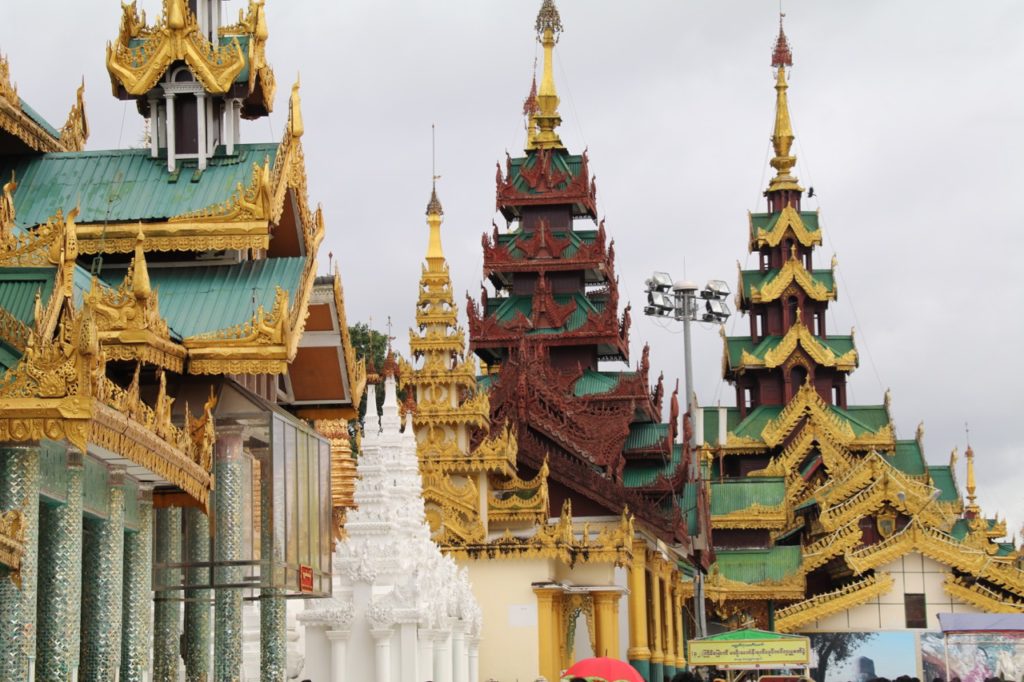
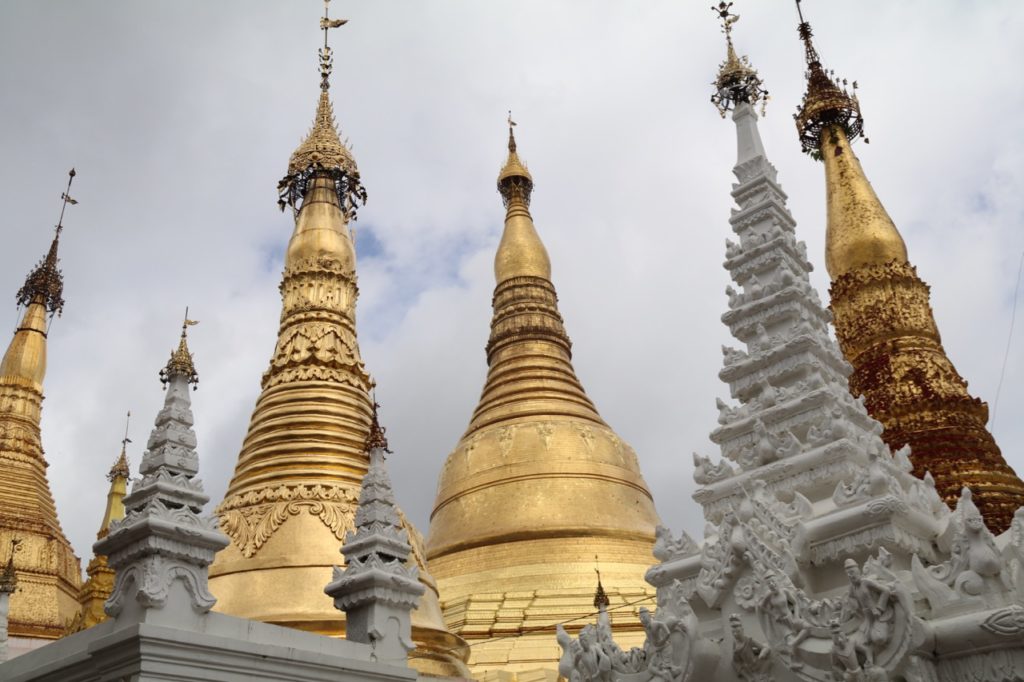
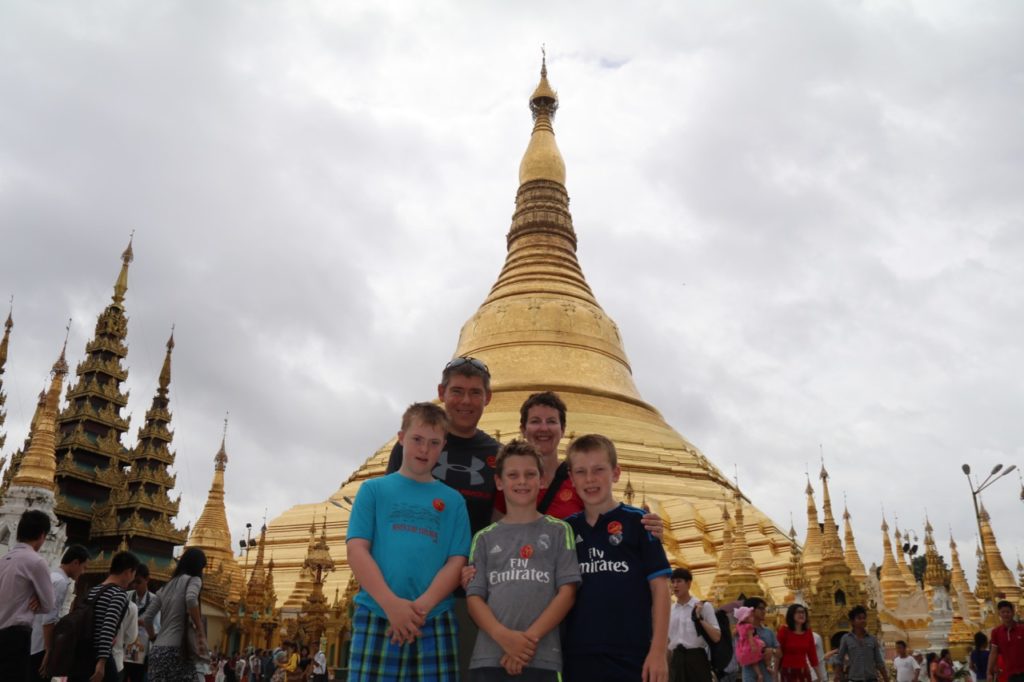
While visiting the Shwedagon Pagoda, we walked mostly among local people who had come to pray. As it was Sunday there were many family groups. The Shwedagon Pagaoda is almost overwhelming in its beauty, with numerous small shrines, ornately decorated buildings, larger rooms filled with golden Buddhas, and of course, the enormous golden stupa centerpiece.
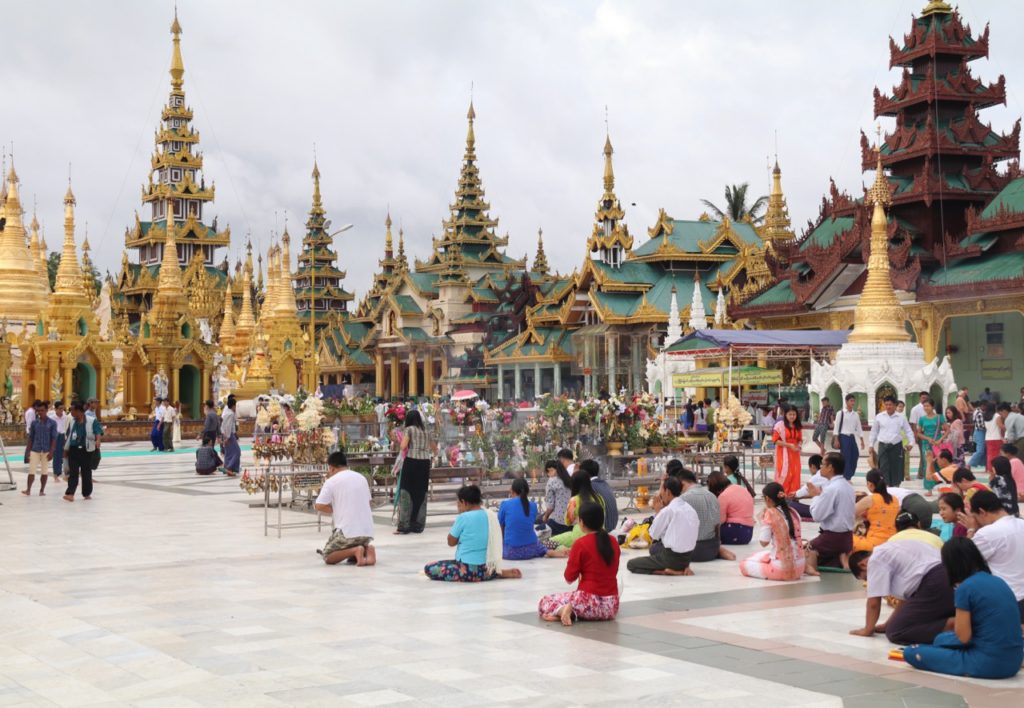
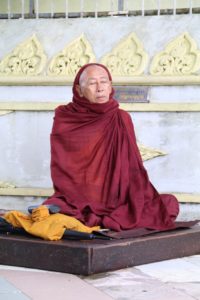
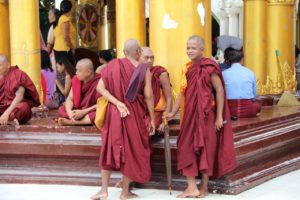
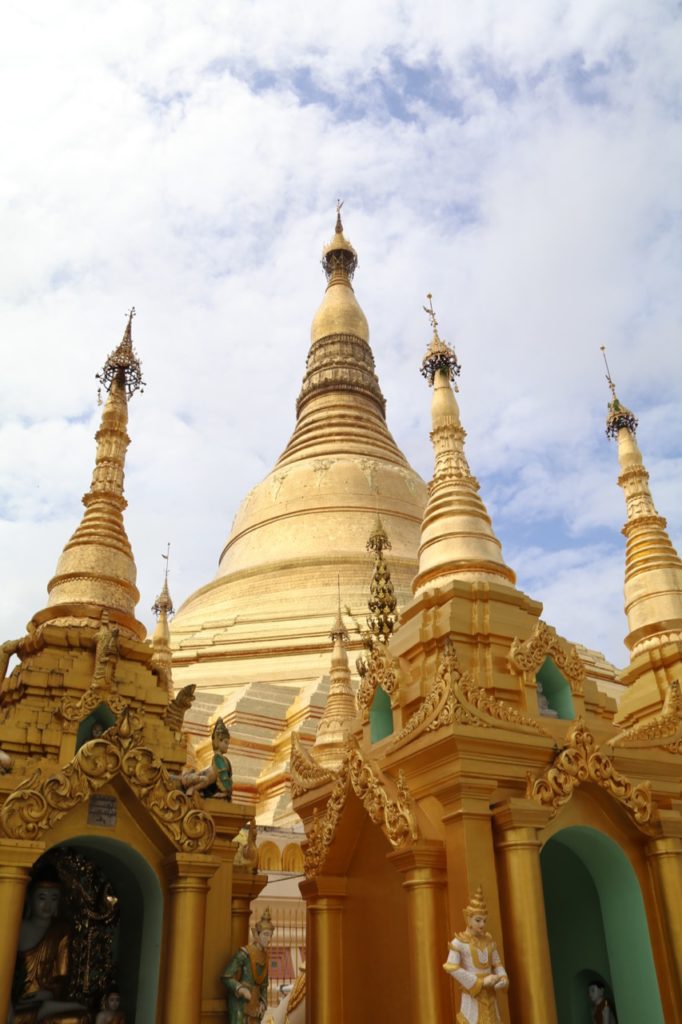
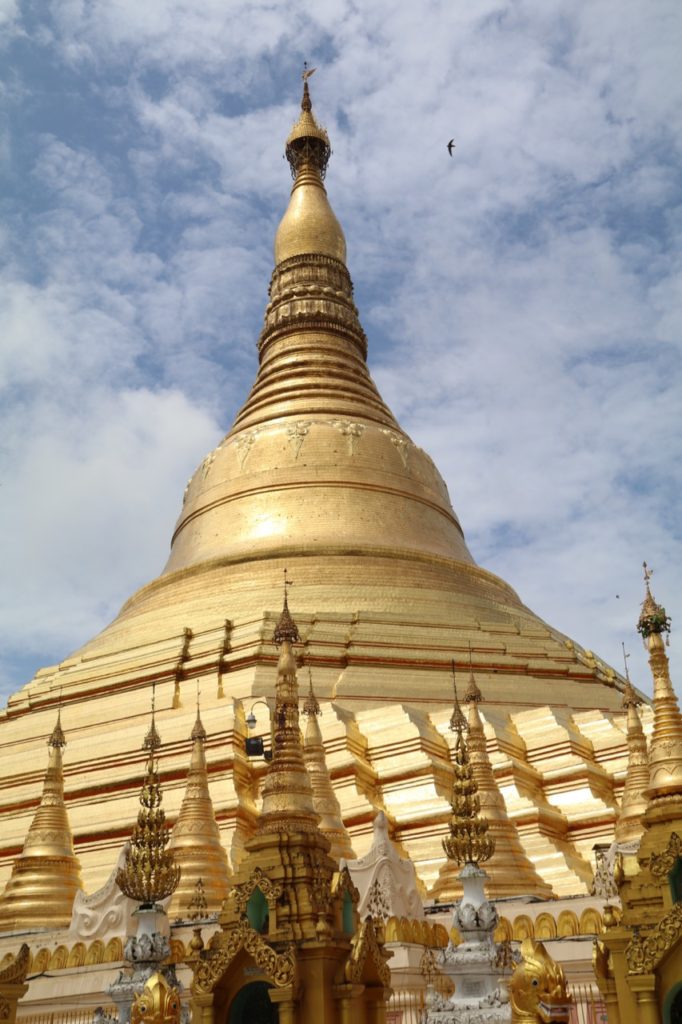
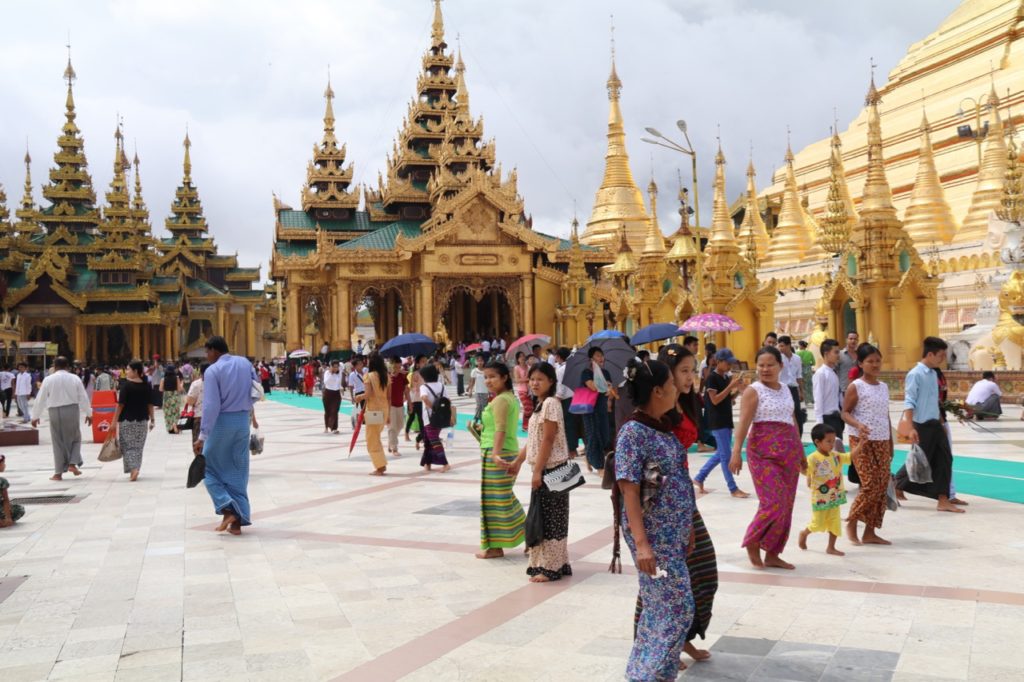
The boys have similar celebratory status here as they had in China with numerous people asking them for photographs. In China nobody could believe we had three children and three boys at that, given their one child policy, (recently relaxed to two children); here it seems there are few western family groups so people are fascinated by us as a family. We have had to get used to a lot of staring and requests for photographs on this trip!
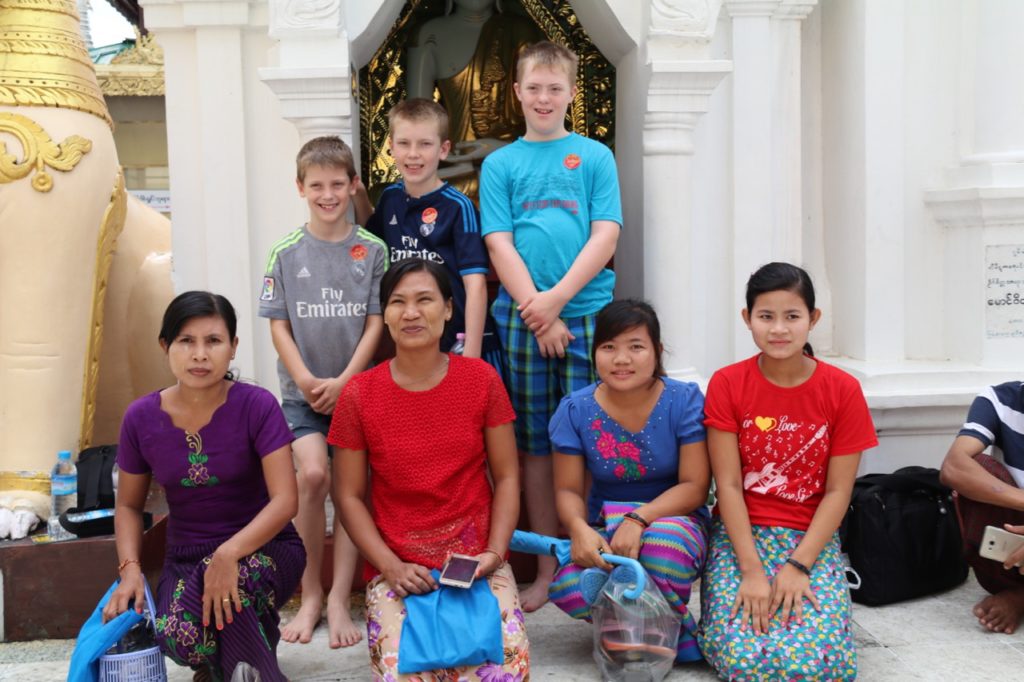
The Shwedagon Pagoda was our favorite thing we saw while in visiting Yangon, but this city still has a lot more to offer. We had a driver for the day and he took us around the rest of the city. We toured and walked around the downtown area which remains one of Asia’s great colonial-era cityscapes, with streets full of neoclassical buildings in various states of monsoon stained, tropical overload decay. Superimposed on this old world fabric the bustling street life of Yangon goes on, with roads and pavements crammed full of food stalls, street hawkers, traffic and shoppers. Rising out of the heart of downtown is the Sule Pagoda, placed at the centre of the British grid-plan in the 1850’s, towards which all streets seem to converge. All distances to other parts of the nation are measured from here.
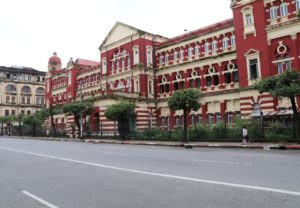
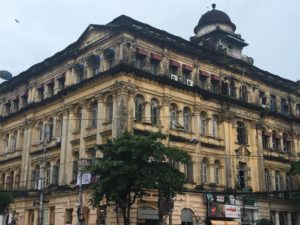
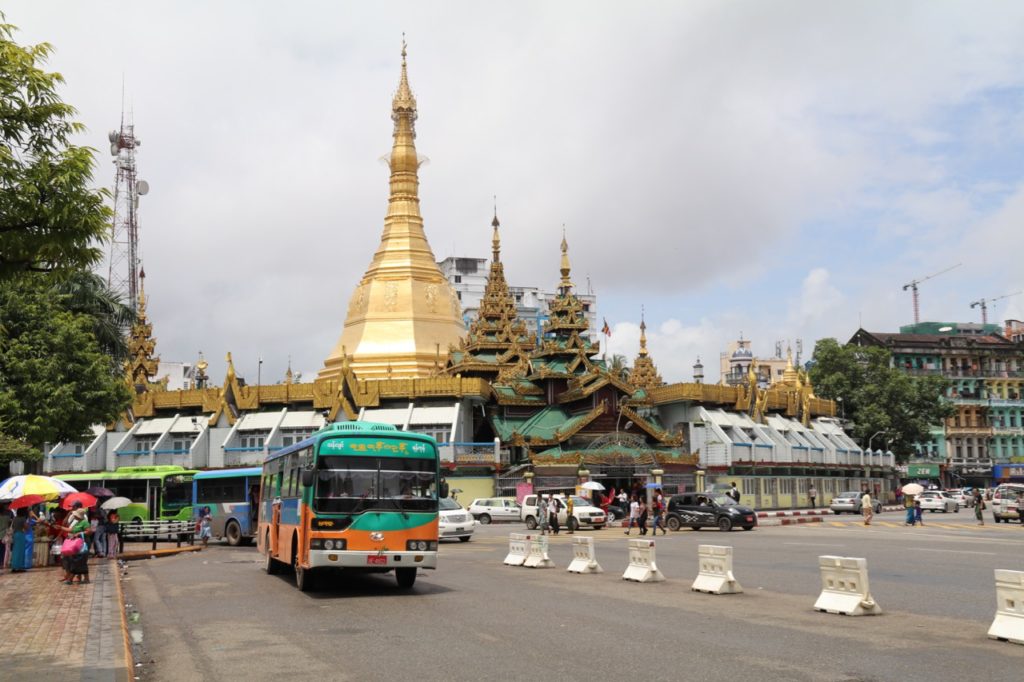
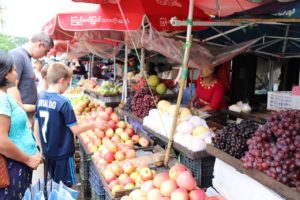
We saw a giant Buddha, 66 metres long, reclining at the Chaukhtatgyi Paya. To visit these Buddhist temples we had to remove our shoes and socks. Everyone we saw in Yangon wore flip flops…taxi drivers, shopkeepers, our hotel staff, children and adults…everyone.
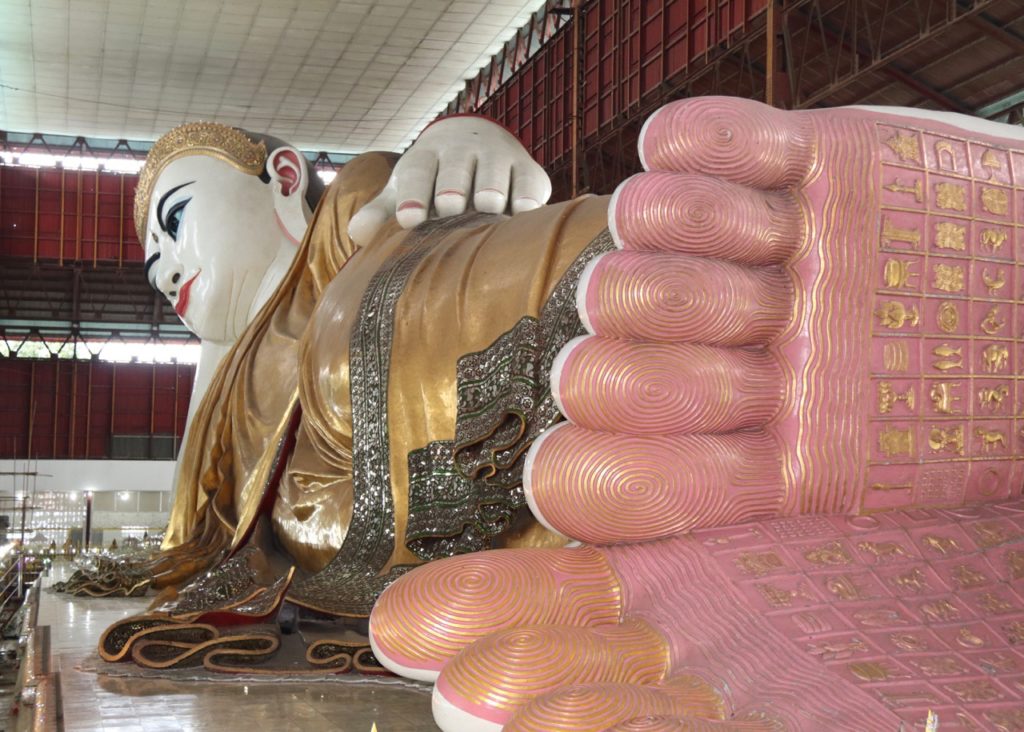
We drove around Kandawgyi Lake, the ‘Great Royal Lake’, a huge lake surrounded by gardens. The Karaweik Palace sits on the east side of the lake and hosts a nightly dinner and cultural show.
One of the best places for shopping in Yangon is at the Bogyoke Aung San Market. This market is the place to buy clothing, flip flops, handmade artwork, wooden carvings and jewellery. We bought the sarong-like longyi for the boys here, a traditional skirt worn by Burmese men and women. It is one piece of fabric that is wrapped around the waist and tied on the side (for women) and in the centre (for men). It is long, ending at the ankles, and made of a variety of fabrics and prints.
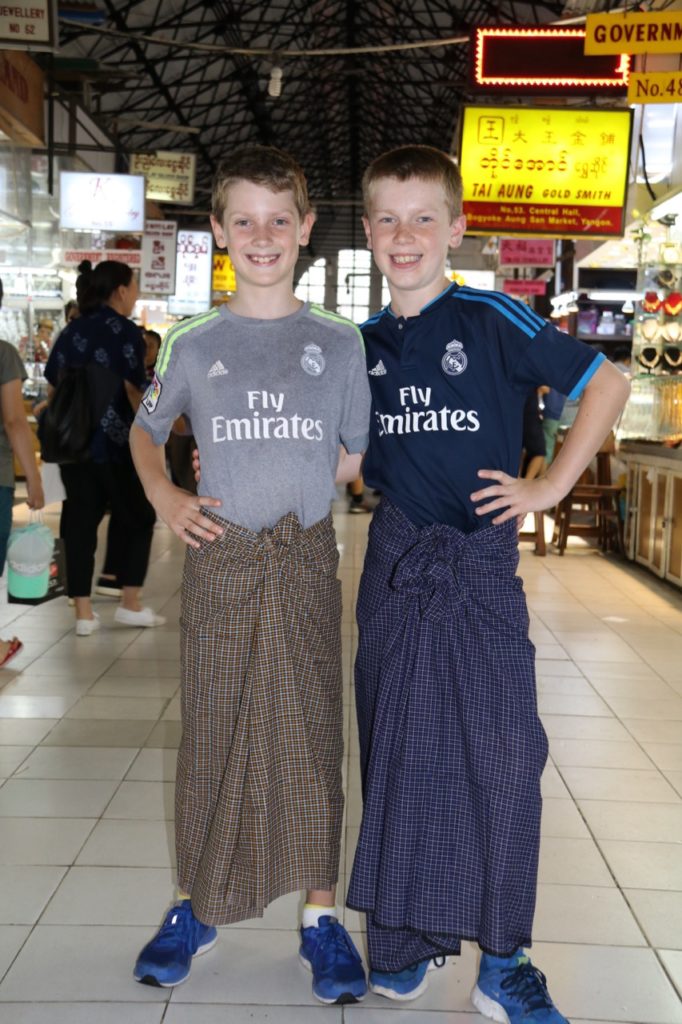
For lunch on our last day in Yangon we visited the Rangoon Teahouse, a stylishly designed hipster teahouse that serves tea and a twist on traditional Burmese cuisine. It was a great lunch and several cups of traditional tea made with evaporated milk for richness and condensed milk for sweetness…delicious.
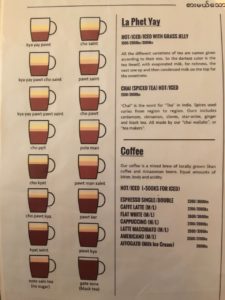
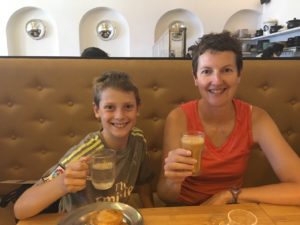
WHERE WE STAYED
We spent three nights at the Hotel Grand United (Alone branch) on the outskirts of the city close to the Shwedagon Pagoda. Taxis are cheap in Yangon and easily accessible.
FOR MORE ON MYANMAR:
Updated Post December 2018
Have you been to Yangon in Myanmar? Do you have any recommendations for visiting Yangon with kids?



2 Comments.
Looks superb!
Very interesting place, glad you guys had fun x